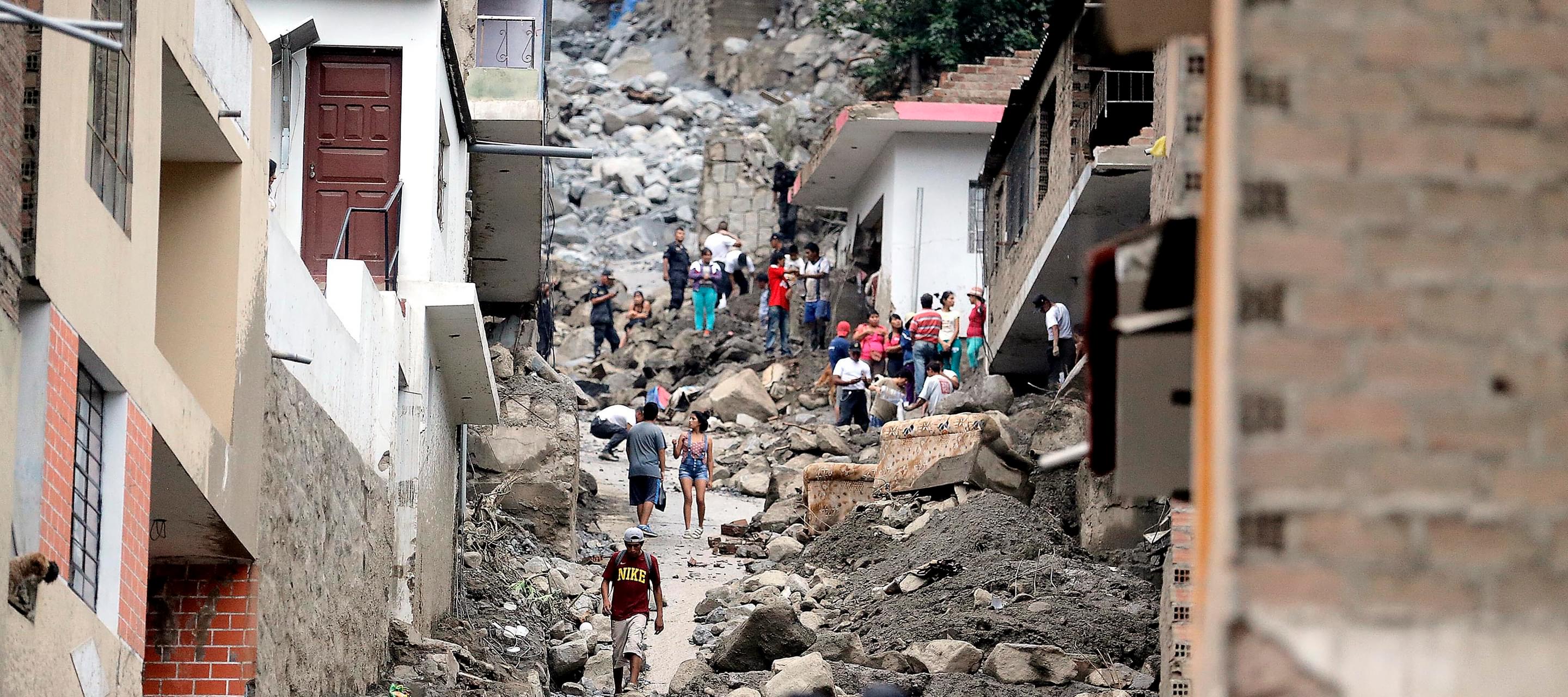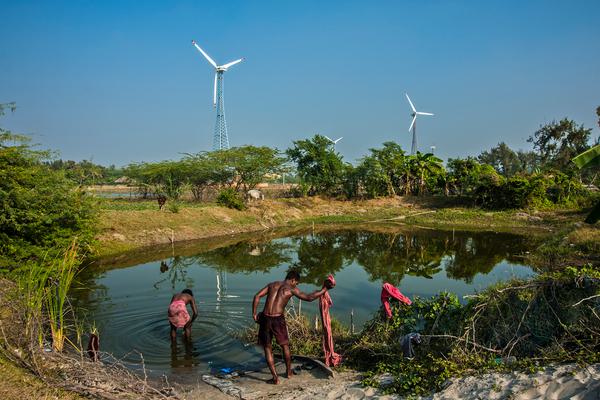What is 'loss and damage' from climate change?
26 March 2023

What is loss and damage?
In 2014, the Intergovernmental Panel on Climate Change (IPCC) warned that failure to make “substantial and sustained” reductions in greenhouse gas (GHG) emissions would increase the likelihood of severe and irreversible impacts, and result in economic and non-economic “loss and damage”.
The Paris Climate Agreement stresses the importance of “averting, minimizing and addressing” loss and damage as a key pillar of the treaty.
Neither the UN Framework Convention on Climate Change (UNFCCC) nor the Paris Agreement has provided a formal definition of loss and damage. At a high level, the UNFCCC states that loss and damage generally refers to the impacts of climate change that exceed households’ and communities’ ability to adapt, due to slow onset events (rising sea levels, glacial retreat, desertification, loss of biodiversity) and/or extreme weather events (droughts, heatwaves, and storm surges). These are the two types of climate disasters described in the report of the Warsaw International Mechanism for Loss and damage (Warsaw Mechanism) which is the body mandated to oversee loss and damage.
There is a recognition that certain impacts are now unavoidable despite adaptation efforts, and that these damages are distributed inequitably, making the issue a matter of climate justice. While countries in the Global North have contributed most to global warming, those in the South are suffering the worst consequences. For example, the recent climate change-linked floods in Pakistan injured over 12,000 people and cost the country an estimated $40 billion in damages, despite Pakistan being responsible for only 0.4% of historic emissions.
Is there a plan to address loss and damage?
The issue of loss and damage in global climate negotiations have been contentious for decades. In 2019 at least five United Nations treaty bodies affirmed that states must cooperate to establish global responses addressing loss and damage suffered by vulnerable countries.
It wasn’t until November 2022 at COP27, after a tense two weeks of advocacy and negotiation, that countries reached a historic agreement establishing funding arrangements as well as a fund for loss and damage experienced by vulnerable countries hit by climate disasters, financed by developed countries (who are the largest historical emitters). The decision does not detail which countries would be required to provide funds nor the structures, beneficiaries, or other crucial details of the fund still to be designed and negotiated – but the agreement marks an initial step forward for climate justice and reparations.
A “transitional committee” will make recommendations in 2023 on how to operationalise the funding arrangements and fund for consideration and adoption at COP28 in Dubai at the end of 2023.
At COP27 countries also resolved key questions around the governance structures of the Santiago Network on Loss and Damage (SNLD), which aims to provide developing countries with technical assistance to address loss and damage, and paving the way for its full operationalisation at COP28.
Outside of the UNFCCC, there continue to be important initiatives and dialogues contributing to the loss and damage agenda. For example, the Climate Vulnerable Forum and the Vulnerable Twenty (V20) Group working to crowd-source loss and damage funding, and the the G7 and V20’s “Global Shield” against climate risks initiative, aiming to enhance existing financial structures on climate risk and loss and damage finance.
What do climate-induced losses and damages look like?
Loss and damage can be characterised as economic and non-economic.
- Economic losses include the loss of resources, goods, and services traded in markets that lead to income streams or constitute assets. It also includes the loss of physical assets such as infrastructure and property. Not considering non-economic losses, estimates of economic damages due to climate change range from US$290 billion to 580 billion a year by 2030.
- Non-economic losses can be understood as everything that is not a pure economic loss. This includes the loss of human lives, health, mobility, communities, cultures, societal and cultural identity, heritage, indigenous knowledge, biodiversity and territory. Non-economic losses can have catastrophic impacts on a community or a nation’s history and culture. For example, the loss of coral reefs, schools, and homes in the Maldives is slowly destroying 2,000 years of culture.
What is the human rights approach to loss and damage?
Given the breakthrough at COP27, this is a fast-evolving field with many perspectives on the best approach.
Unlike scientific and technical approaches which frame loss and damage in abstract terms and numbers, the ‘human rights’ (or ‘rights-based’) approach calls direct attention to the rights of the individual. It emphasises that the loss and damage arising from climate crisis “disproportionately impacts those facing marginalisation and exacerbates structural inequality”. The Committee on the Elimination of Discrimination against Women (CEDAW) for example says that women living in poverty, and women belonging to ethnic, racial, religious and sexual minorities face greater impacts.
The human rights approach is important to consider when assessing the role of the private sector in loss and damage, as the section below illustrates.
What are the roles and responsibilities of businesses?
The UNFCCC does yet not provide clear guidance on the role of the private sector in addressing loss and damage. The Warsaw Mechanism only mentions the private sector in passing while discussing the importance of cooperation and collaboration in addressing extreme weather events and slow onset events.
However, businesses have a direct responsibility to respect human rights as stipulated in the UN Guiding Principles on Business and Human Rights (UNGPs). The UNGPs also require businesses to provide access to remedies where violations occur. Some approaches to private sector involvement are set out below:
- Reparations for loss and damage: As climate change is human-induced and the industrial revolution has contributed significantly to this challenge, companies operating in polluting industries are partly responsible for the extreme weather events and slow-onset events caused by climate change. Many human rights advocates such as the International Centre for Climate Change and Development in Bangladesh argue that fossil fuel companies should pay reparations for the loss and damage being suffered in vulnerable countries. The UN Secretary General recently stated that polluting companies should pay for damages to achieve both moral and economic justice.
- Direct support in disaster risk reduction: In the area of disaster risk reduction (DRR), the UN has observed the importance of private sector investment in critical infrastructure to increase disaster resilience.
- Climate-related due diligence: The UN Office of the High Commissioner for Human Rights (OHCHR) has stated that businesses conducting human rights due diligence should ensure that they identify, prevent, and mitigate climate-related human rights impacts in their activities. The OHCHR notes that businesses:
- Should continually assess how their environmental and climate impacts may lead to human rights harms;
- Should meaningfully consult with Indigenous peoples and local communities, as well as environmental human rights defenders and civil society;
- Should take the necessary steps across their activities and supply chains to prevent any contribution they may make to human rights harms arising from climate change;
- Should ensure that they establish or participate in effective grievance mechanisms to remediate climate and environmental concerns raised by affected persons;
- Where the business has contributed to severe impacts (such as a large business involved in energy, transportation, industrial agriculture etc) should provide remediation appropriate to its share in responsibility for the harm.
- Incorporate stakeholders’ loss and damage related vulnerabilities: Finally, risks businesses pose to people can intersect with the intensity of the loss and damage experienced by vulnerable communities. For example, a migrant worker suffering harm and abuse may be even more vulnerable if they are also a climate refugee unable to return to their home country.
Businesses should ensure that they pay specific attention to regions and groups potentially affected by their products, operations, or services who are also at risk of climate-related loss and damage. Where possible, businesses should also ensure that they are contributing to the empowerment and resilience of these stakeholders. For example, one particular recommendation by CEDAW to states regarding the non-state actors at the national level is to:
“...encourage women’s entrepreneurship and create incentives for women to engage in businesses involved in sustainable development and climate resilient livelihood activities in areas such as the clean energy sector and agro-ecological food systems. Businesses working in these areas should also be encouraged to increase the numbers of women they employ, particularly in leadership positions.”
As the framework around loss and damage develops, and as the climate crisis continues to grow, integrated approaches by private sector actors to their climate and human rights impacts (positive and negative) is critical.
IHRB is exploring the business, human rights, and climate action nexus to the emerging loss and damage agenda moving forward and seek to elevate a range of expert perspectives as the Fund negotiations progress.


